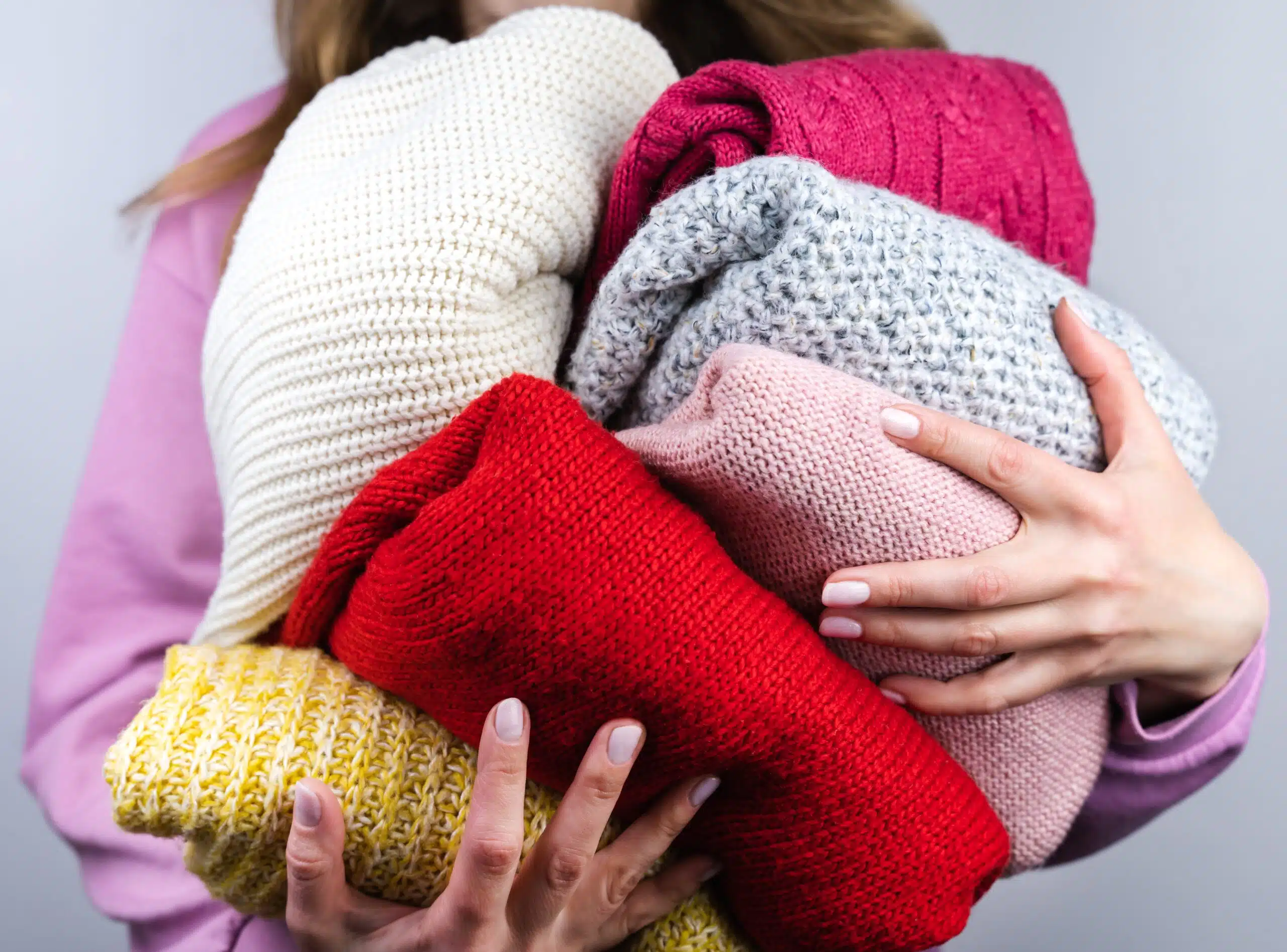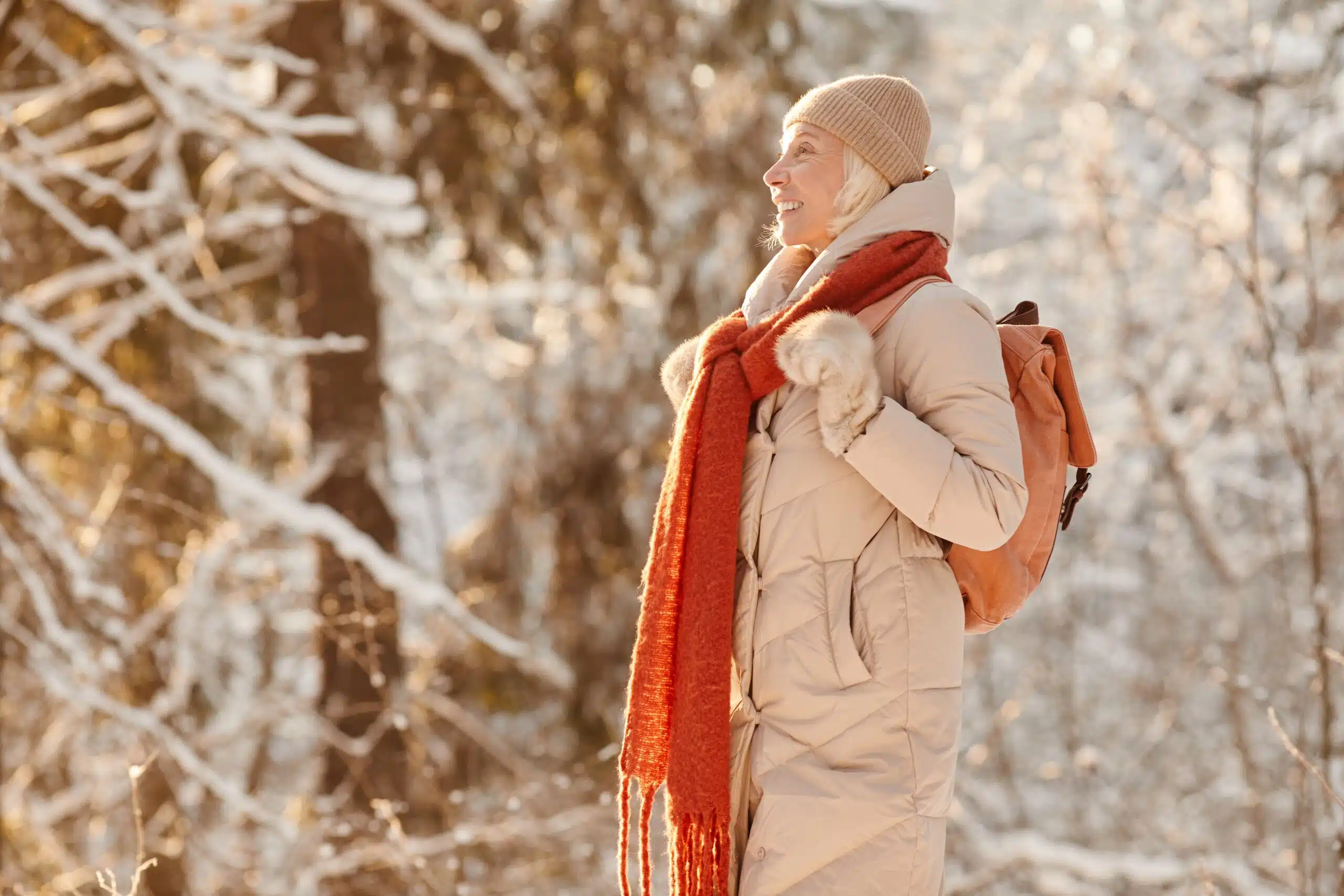Essential Winter Gear for Seniors: Stay Warm and Secure
Author: Lifeline Canada
Date: 4 January 2024
There’s nothing quite like waking up to a fresh blanket of snow on a winter’s day. While picturesque from the inside, once you step outdoors, the chilly landscape reminds you to bundle up. Whether you keep it simple with a coat and mittens or stock your closet with senior-friendly winter accessories, staying warm this time of year is crucial, especially for older people.
Seniors are more vulnerable to cold-related health risks due to reduced body regulation and underlying health conditions. Staying warm prevents hypothermia, mobility issues, and discomfort, which can increase the risk of illness and falls during winter. In this guide, we’ll explore winter gear for seniors to ensure safety and protection, no matter the freezing temperatures.
Keeping Warm: Clothing Essentials for Seniors
Layering for Insulation
Layering is a way to dress in the winter that follows a rule of three. The first layer is meant to provide warmth while wicking away sweat. The next layer should properly insulate with a heavier, warmer material. The final, or outer layer, should protect against wet weather and windy conditions.
Base Layers
- Long-Sleeve Thermal Tops and Bottoms: Look for moisture-wicking, breathable fabrics like merino wool or synthetic materials to trap heat and keep the skin dry.
- Fleece-lined Leggings or Pants: Provide extra insulation without adding bulk, ensuring comfort and warmth.
Insulating Layers
- Fleece Jackets or Vests: Offer lightweight yet effective insulation to keep seniors warm indoors and as a mid-layer outdoors.
- Quilted or Padded Vests: Provide additional warmth while allowing freedom of movement.
- Insulated Sweaters or Pullovers: Choose thicker knits or wool blends for added warmth.
Outerwear
- Insulated Winter Coats: Opt for coats with high-quality insulation, such as down or synthetic fill, featuring a water-resistant or waterproof outer shell for protection from snow and rain.
- Parkas or Jackets with Hoods: Ensure the outerwear has a detachable or adjustable hood to shield against cold winds and precipitation.
- Long Winter Coats: Consider longer styles that cover more of the body to retain heat and protect against wind chill.
Winter Footwear and Accessories
As winter unfurls its snowy mantle, streets and sidewalks transform into slippery canvases of ice, sleet, and slush. Navigating this icy labyrinth can be particularly challenging for seniors. While there are many facets to winter safety for the elderly, the journey begins at the ground level – with the right footwear and accessories.
Footwear for Icy Conditions
- Insulated Winter Boots: Look for boots with proper insulation (like Thinsulate) and a waterproof exterior to keep feet warm and dry.
- Boots with Ice Grips or Cleats: Consider footwear with detachable ice cleats or grips that can be added for extra traction on icy pathways.
- High-top Boots or those with Ankle Support: Provide additional stability and protection against slips and falls.
Warm Accessories
- Thick, Insulated Socks: Opt for wool or synthetic blends that wick away moisture and retain warmth even when damp.
- Gloves or Mittens with Grip: Choose gloves or mittens with a non-slip grip on the palms and fingers, ensuring you can maintain a secure hold on walking aids or railings.
- Fleece-lined or Thermal Hats: Keep the head warm, as a significant amount of heat can be lost through the head. Look for hats that cover the ears for added warmth.
- Scarf or Neck Gaiter: Select a warm, insulating scarf or neck gaiter to shield the neck and face from cold winds.
- Hand and Foot Warmers: Consider disposable or rechargeable hand and foot warmers to provide extra warmth during extremely cold weather.
Safety and Mobility: Winter Gear for Secure Movement
Aside from insulated layers, secure footwear, and accessories for warmth, there are other types of winter gear for seniors that can help with overall safety.
Walking Aids for Stability
Winter-specific walking aids for seniors, like canes, walking sticks, or walkers, play a vital role in ensuring stability on icy terrain.
- These aids often feature specialized attributes such as spiked tips, broader bases, or adjustable designs, enhancing traction and support.
- Canes with retractable ice picks and walkers with durable, all-terrain wheels offer added stability in snowy conditions.
Choosing these winter-adapted aids minimizes the risk of slips and falls, empowering seniors to navigate safely through challenging icy environments, promoting independence, and reducing the likelihood of winter-related injuries.
Mobile Medical Alert Systems
A key device for keeping seniors safe in colder weather comes in the form of mobile medical alert systems. Sometimes called life alert bracelets or pendants, these winter-ready devices provide the greatest peace of mind for seniors and their loved ones. At Lifeline Canada, we take this safety net a step further with our On The Go system.
- A simple push of a button instantly connects the wearer to our vigilant response centre, available around the clock.
- In addition, automatic fall detection can connect the wearer with the response centre, even if they are unable to push the button themselves.
- In situations where every second counts, our professional responders swiftly assess the situation and dispatch appropriate emergency services, regardless of the wearer’s ability to communicate.
- The device contains an advanced GPS tracking system, sharing the precise location of the wearer with our response centre. This allows emergency responders to locate the wearer quickly for more immediate support.
Winter’s icy grip can lead to falls that threaten the health and well-being of seniors, potentially causing injuries that demand urgent care. Having immediate access to a medical alert device helps ensure potential injuries are treated promptly.
Get Winter-ready with Lifeline Canada
Essential winter gear for seniors is crucial to ensure their comfort, safety, and well-being during the colder months. As aging individuals may be more susceptible to the harsh effects of winter, having the right gear becomes pivotal. This includes layered clothing, including thermal undergarments, sweaters, and jackets. Additionally, hats, gloves, and scarves protect extremities from frostbite. Finally, proper footwear, such as slip-resistant and insulated boots, helps prevent falls on icy surfaces while keeping feet warm and dry.
For added support, Lifeline Canada has various medical alert systems, including On The Go, that facilitate a safer environment for seniors year-round. To learn more about our devices, reach out to us.
What You Should Do Now:
Here are 5 ways we can help you or your loved one live safer and more independently at home as long as possible:
- Get our latest tips, tools and resources straight to your inbox. Sign up for our monthly newsletter.
- Not sure if the time is right for a medical alert service? Take this quick assessment to find out.
- If you would like to learn how to live a healthier and safer lifestyle, go to our blog or visit our resources section, where you can read and download guides.
- Wondering which medical alert system company is the best for your needs? We’ve put together a guide comparing the best medical alert systems for you.


